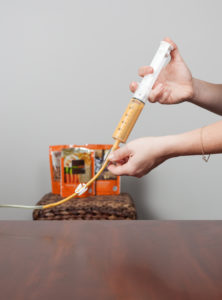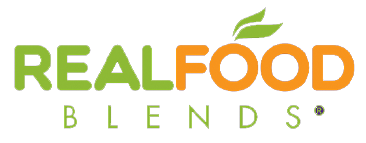
Getting Started With Real Food Blends
Tips for transitioning from formula
The information below is not medical advice. Always work with your medical team before making any changes to your enteral nutrition, especially if you have never consumed real food before or have reason to suspect allergies. Keep in mind that one Real Food Blends meal equals 8 ounces (one typical can of formula).
Seven day sample schedule for getting more out of real food
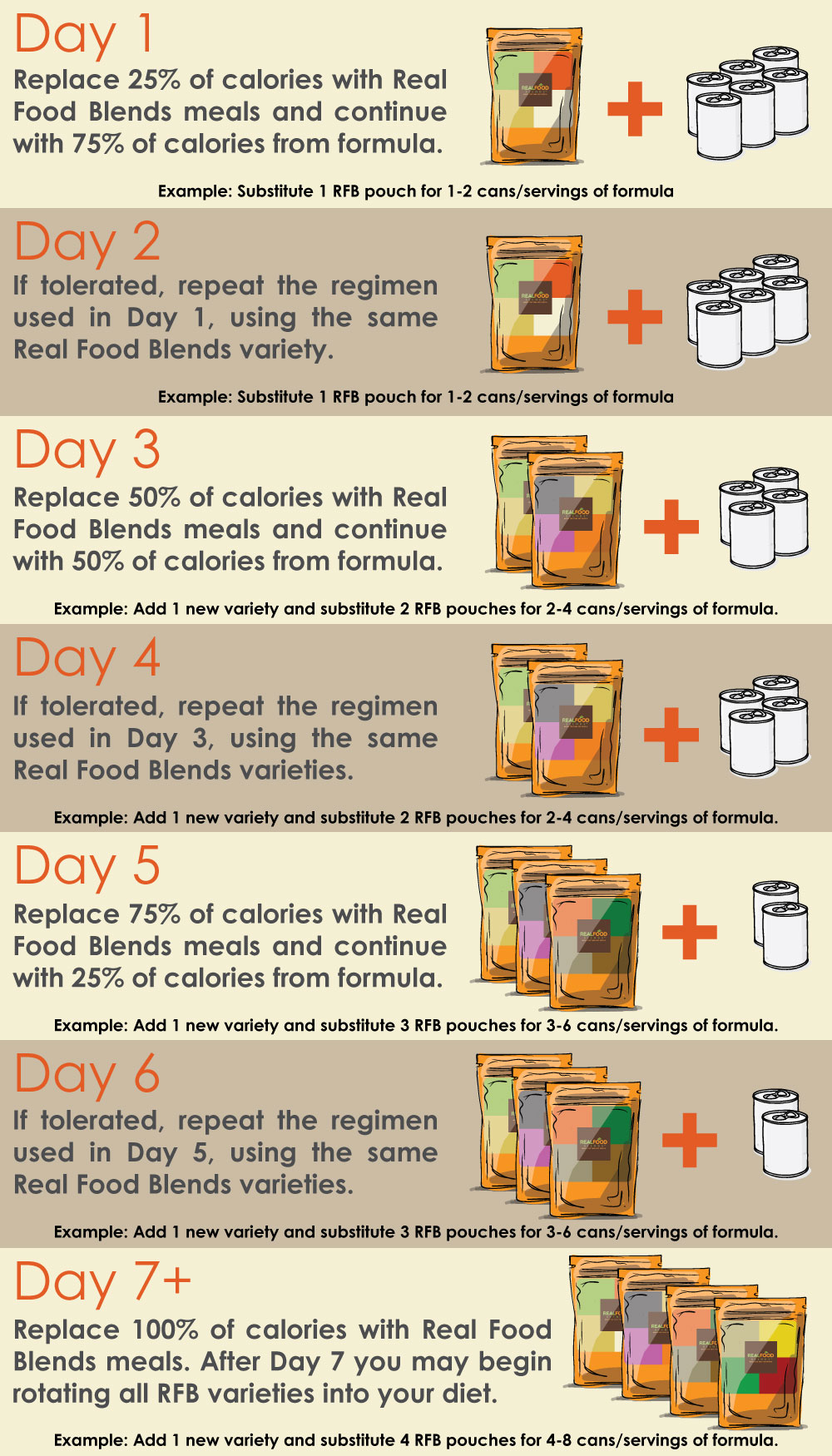
- The number of Real Food Blends pouches you will need per day will vary based on your daily caloric goal set by your medical team. Don’t be surprised if you need more calories from real food than you required on formula – this is common and luckily volume tolerance tends to increase with real food as well to help make hitting those goals easier!
- Whenever possible, we like to encourage working toward a normal mealtime schedule of breakfast, lunch, and dinner (with maybe a snack or two thrown in for extra calories), versus continuous or overnight feeds. If you have been on continuous feeds, it may take some time to get toward this schedule, but often this can be done once the body adjusts to having real food again.
- We like to encourage the use of the slow-push bolus feeding method with a syringe to keep our meals as thick as possible. The thickness tends to help with reflux symptoms and can provide a feeling of satisfaction that a pure liquid meal doesn’t always provide. When you are transitioning, though, you might find it easier to mix the meals with some formula or water for a thinner consistency or to feed through a pump or gravity bag. That’s okay! The point is to start getting some real food into the body and you can slowly head toward bolus feeding when ready.
- After day 7, ideally you would introduce the other two RFB varieties into your diet and continue to rotate the meals. For even more variety, consider some simple additions like whole milk or pourable Kefir for added calcium. Our Real Food Blends recipe book has more ideas too!
How to Use Real Food Blends
Adding to Real Food Blends Meals
Additional Tips
- Add water to meet hydration needs – same as oral eaters do! Discuss with your medical team about how much water is needed and also take note of outputs. In general, urine should be pale yellow and stools easy to pass. Additional water may be necessary in hot weather and/or when ill.
- RFB meals contain no added sodium. If you’re not on a sodium restricted diet, adding anywhere from ¼ to 1 teaspoon of salt per day would meet your daily sodium requirements (depending on your age and weight). Always consult with your medical team on exact needs.
- RFB meals contain no added synthetic vitamins or minerals. You may want to consider adding an age-appropriate multi-vitamin along with a calcium supplement to meet your nutritional needs once fully transitioned to RFB.
- If a thinner consistency is required, add water/fluid to the pouch via syringe. Warming can also help thin the meals if desired.
- Knead the meal before opening the package to improve consistency, especially if the meal has been exposed to colder temperatures.
How to Administer Real Food Blends Using Bolus Method
Step 1: Open Pouch
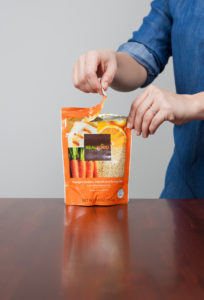
Step 2: Insert Syringe & Draw
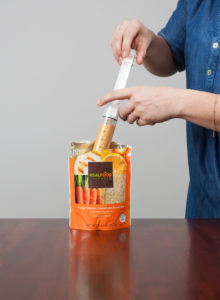
Step 3: Slow Push to Administer
